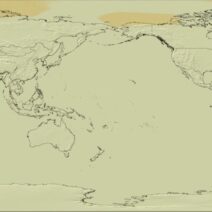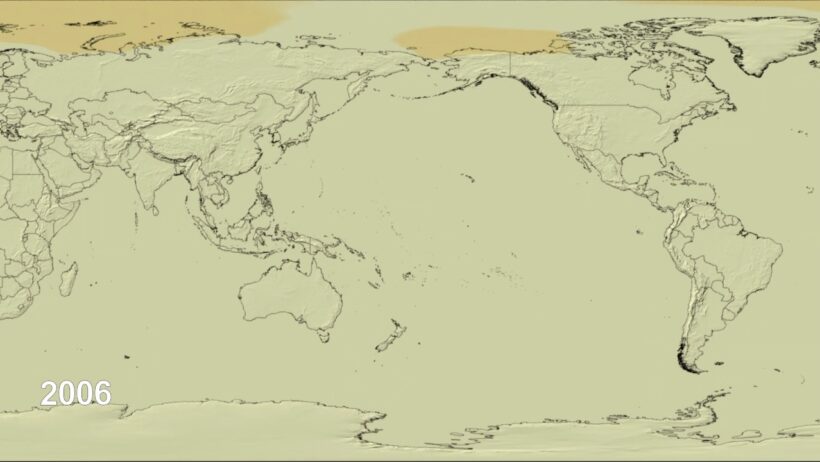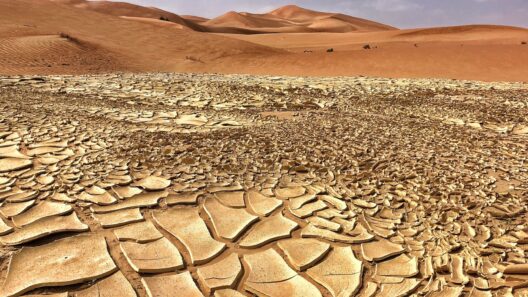Climate graphs serve as invaluable tools for visualizing and interpreting the complex tapestry of our planet’s weather patterns and climate variations over time. But what precisely is a climate graph? At its core, a climate graph is a two-dimensional representation that encapsulates data regarding temperature and precipitation across a specific geographic area over a designated time period. This visual format allows for both immediate comprehension and in-depth analysis, prompting an intriguing question: How can such a straightforward graphical representation encapsulate the multifaceted dynamics of climate, making them understandable to the average observer?
To understand the significance of climate graphs, it is necessary to delve into their components. Typically, these graphs include two axes: one representing temperature and the other representing precipitation. The temperature is generally displayed as a line graph, while precipitation is often illustrated as bars. This juxtaposition visually contrasts the two variables, revealing their interdependencies and seasonal variations. For instance, regions with high temperatures may show a dip in precipitation during certain months, leading to arid conditions. Conversely, tropical climates may display consistent rainfall paired with stable, warm temperatures throughout the year.
Climate graphs also provide a stark visualization of climatic norms. For example, when scrutinizing a climate graph of a temperate region, one might observe the characteristic bell-shaped curve of temperature changes throughout the seasons. Winter months are likely to show lower temperature values, while summer months peak dramatically, indicating a clear seasonal rhythm. This cyclical pattern highlights not only the predictability of seasonal changes but also emphasizes the contrast in conditions that ecosystems face throughout the year.
However, the simplicity of climate graphs belies the complexity of the environmental systems they represent. What happens when we overlay these graphs with data on human activity, such as carbon emissions or deforestation rates? The potential challenge lies in deciphering how anthropogenic influences disrupt and alter these natural patterns. By introducing additional variables like greenhouse gas concentrations and land use changes, one can begin to understand the profound impact humans have on the climate system.
Moreover, regional specificity plays a pivotal role in the interpretation of climate graphs. A graph depicting climate data from one geographic area cannot readily be extrapolated to another without considering local variables such as altitude, distance to body of water, and prevailing winds. For example, coastal areas may show more moderated temperatures due to oceanic influence, while inland regions could experience extreme fluctuations. The intricate interplay of these climatic factors necessitates a contextual analysis for each individual climate graph.
Climate graphs are not just useful for climatologists and environmental scientists; they are essential for policymakers, educators, and the general public. By distilling complex data into a digestible format, these visualizations offer insights that guide decision-making processes. For instance, communities at risk of flooding can utilize climate graphs depicting rainfall trends to prepare for potential extreme weather events. This practical application highlights the urgency of climate change literacy. How can society harness the information encapsulated within climate graphs to foster resilience in the face of a changing climate?
Educators, too, can leverage climate graphs in the classroom to engage students in discussions about climate science and environmental stewardship. By using real-world data, students can develop critical thinking skills as they analyze and draw conclusions from the presented information. This hands-on approach may incite curiosity and inspire the next generation of environmental activists. What if the intrigue of studying climate graphs could catalyze broader advocacy efforts among youth aimed at promoting sustainable practices within their communities?
Furthermore, the advent of technology has revolutionized the accessibility and production of climate graphs. With numerous online platforms, individuals can create customized climate graphs tailored to their specific research or interests. This encourages personal exploration of the local climate’s variability and spurs greater awareness of prevalent ecological issues. Yet, this accessibility also invites challenges — how can one ensure the accuracy and reliability of the data being used to construct these graphs? As citizens become more engaged, it is paramount they possess the requisite knowledge to critically evaluate the sources of their information.
Interdisciplinary approaches can further enhance the understanding of climate graphs. Integrating knowledge from fields such as geography, economics, and social sciences can unveil richer narratives that underscore the implications of climate data. Evaluating the socio-economic factors influencing climate resilience can provide deeper insights into the disproportionate effects climate change has on marginalized communities. This intersectionality fosters a comprehensive understanding of climate issues as inherently linked to social justice.
In conclusion, climate graphs are not merely graphical representations of data; they are gateways into understanding our planet’s complex climate systems. They succinctly depict temperature and precipitation changes while encapsulating a plethora of underlying factors and implications. As we grapple with the realities of climate change, these visual tools can guide informed decision-making and inspire proactive measures. The challenge remains: how can society collectively interpret and act upon the wisdom these graphs impart? It is through awareness, education, and actionable insights that we can hope to mitigate the impacts of climate change and contribute to a sustainable future for our planet.






